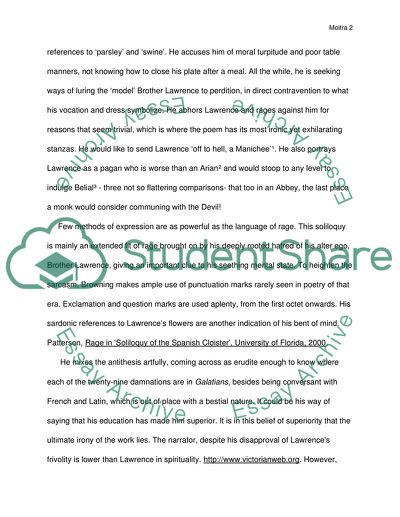Cite this document
(“Soliloquy of the Spanish Cloister Essay Example | Topics and Well Written Essays - 1250 words”, n.d.)
Soliloquy of the Spanish Cloister Essay Example | Topics and Well Written Essays - 1250 words. Retrieved from https://studentshare.org/literature/1546524-essay-about-poems
Soliloquy of the Spanish Cloister Essay Example | Topics and Well Written Essays - 1250 words. Retrieved from https://studentshare.org/literature/1546524-essay-about-poems
(Soliloquy of the Spanish Cloister Essay Example | Topics and Well Written Essays - 1250 Words)
Soliloquy of the Spanish Cloister Essay Example | Topics and Well Written Essays - 1250 Words. https://studentshare.org/literature/1546524-essay-about-poems.
Soliloquy of the Spanish Cloister Essay Example | Topics and Well Written Essays - 1250 Words. https://studentshare.org/literature/1546524-essay-about-poems.
“Soliloquy of the Spanish Cloister Essay Example | Topics and Well Written Essays - 1250 Words”, n.d. https://studentshare.org/literature/1546524-essay-about-poems.


